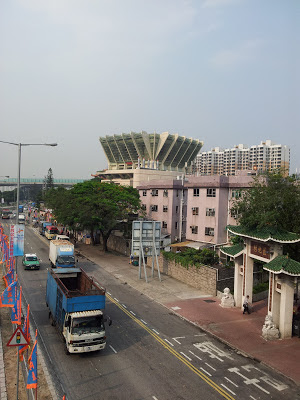Introduction
Introduction to Vision
People seldom know much about Vision because most of them don’t like it; they don’t like it because they still can’t make head nor tail of it after reading it several times. ‘What’s it REALLY talking about?’, that’s the question people usually ask when they finish reading Vision. It’s a fact that a Japanese scholar in Tokyo immersed himself in Vision for nearly twenty years just to work out the concealed meaning behind every sentence. Isn’t it so amazing and unbelievable?
Among Lao She’s short stories, Vision is absolutely special, for it’s so elegant, graceful and written in an ornate way. It’s not easy at all to be digested owing to the symbolism in every sentence, which in a way helps create a bittersweet aftertaste of the first-love experience. Lao She frequently uses Beijing dialect in his works and most of them are plain to understand, but Vision is an exception. Compared with what he wrote before, the style is totally different; it utterly stunned people when it first came out. Vision, an ordinary story with abstract and symbolic language, looks like a long verse more than a short story indeed.
In Vision, everything is of fantasy and illusion. It does make you feel like going into a fairyland, where things are ‘made of voices between dream and reality’. No matter what, that’s its fascination and character. Plus, the structure of Vision is carefully carved as well. Initially, I [the narrator] lie down, dreaming, and an irregular triangle floats before my eyes. Then I recall my first love, with a girl of twenty; her family dramatically collapses and I go abroad; I come back afterwards but she is already a hooker; I ask her to marry me; she only laughs. Next, she comes back as a ghost to explain her death. To consolidate the youth and love between us, she chooses to end her own life. Finally, I stand, and am confused, only having a dream of love within that deep greenness. The story is by no means difficult to understand but that’s only something upon the surface—things beneath need to be dug out.
The language of Vision is beautiful and poetic but not too many people dare to touch it. It’s all because of its incessant emphasis on symbolism and implication behind every single sentence. According to Shu Yi, the son of Lao She, the most difficult part to grasp is that triangle, and next is his brief explanation for it:
Above the triangle, golden yellow and deep red flowers mean the madness of the first love, but the darkness behind implies it’s divined to be hopeless. On the left of the triangle, gray purple wild flowers, representing his [the narrator’s] low social status. On the right, a small thatched cottage with pinkish China roses is the symbol of that elegant and delicate girl. In the middle, only deep greenness, standing for the love beyond time and space. Angles on the left and right symbolize he and she, together moving upward to meet at the top of the triangle, where they passionately fall in love, like the golden yellow and red flowers in blossom; but with darkness around, presaging that their love will be tragic and miserable; in the end, just greenness left in the middle of the triangle—only true love can live on. Of course, there are some other explanations. Above is ONLY one of them.
Vision, though not so well known as Crescent Moon, is certainly Lao She’s most satisfying short story. Lao She categorizes it as ‘the experience of my own’, and in fact he loves it very much. Undoubtedly, it is a masterpiece of modernism and symbolism in Chinese literature. Leaving the symbolism all behind [maybe it shouldn’t be so complicated], Vision is simply a romantic tragedy that makes everybody shed tears. Vision is after all not so much of a ‘vision’. It depends on from which angle we look at it. Nonetheless, it ought to be dreamy and elusive because it is in essence very personal.
(To Be Continued)



Comments
Post a Comment